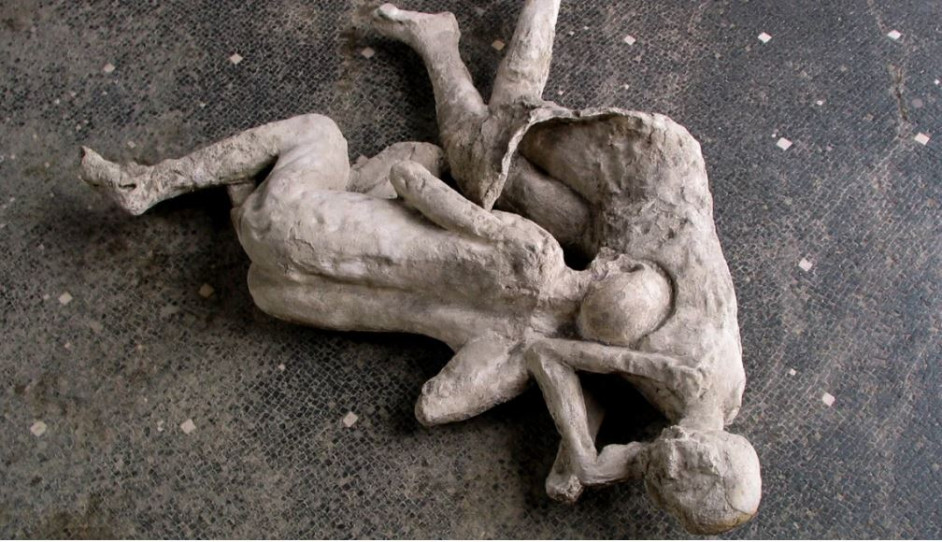Researchers say DNA evidence debunks long-held assumptions – What new analysis reveals about their identities and relationships
It’s a tragic moment, frozen in time: A family of four take refuge under a staircase as ash and pumice rain down on Pompeii. However, scientists who studied the victims’ DNA say this famous scene is not what it seems: the group’s “mother” is actually a man, the Guardian reports.
Breaking down long-standing cases
When Mount Vesuvius erupted in AD 79, the Roman city of Pompeii was destroyed and its remaining inhabitants buried under a thick layer of ash and pumice. These victims were later immortalized by archaeologists who used plaster to fill the voids left by their bodies.
Now researchers say the DNA evidence overturns long-held assumptions about their identities and relationships.
Writing in the journal Current Biology, scientists from Italy, Germany and the US report how they extracted ancient nuclear and mitochondrial DNA from bone fragment samples mixed with plaster taken from 14 casts under restoration, five of which were studied in detail.
Among them were three of the four people found at the foot of the staircase inside a richly decorated building called the House of the Golden Bracelet. The nickname refers to the jewelry worn on the arm of one of the two adults found with a child on their hip – circumstances that led to the idea that this victim was the mother of the group’s two children, with the other adult identified as the father.
However, the new analysis reveals that the person wearing the bracelet was male and had black hair and dark skin. Additionally, the team found no evidence that she was related to the two infants – who were both boys. Indeed, the data suggest that the ancestors of these three victims originated from different populations of the eastern Mediterranean or northern Africa. Researchers believe there is genetic evidence to suggest the other adult may also have been male.
The study also offers new information about the relationship between two victims, who were preserved in an embrace, who were found in a building known as the Cryptoport House. While some archaeologists have suggested that these casts could represent a mother and daughter, two sisters or a pair of lovers, the new analysis rules out the first two interpretations, revealing that one of the victims was male and the pair were unrelated.
“These discoveries challenge long-held interpretations, such as linking jewelry to femininity or interpreting physical proximity as an indicator of biological relationships,” the researchers write. They believe it is possible that restorers in the past manipulated the poses and relative placement of the casts to help tell stories.
However, the analysis did not overturn every narrative: the team’s analyzes confirmed that a victim found alone in a room inside a large building known as the Villa of Mysteries was male, as previously thought, and revealed that he may have been local of Pompeii.
Andrew Wallace-Hadrill, a professor at the University of Cambridge who was not involved in the work, said the Pompeii DNA study had huge potential: “Inevitably, this kind of new evidence overturns some older interpretations, especially those based on rather romantic affairs”.
However, he said the most interesting question was where people came from. “One would expect, in a society heavily based on slavery, considerable diversity,” he said. “It is very interesting, for example, that they have identified a person with dark skin and black hair, which strongly suggests an African slave.”
Phil Perkins, professor of archeology at the Open University, said the study suggested the victims found under the stairs could have been, or came from, immigrants to Italy.
“The research shows that scientific analysis can provide new insight into the lives of Pompeii’s victims and provides further evidence of human mobility around the Mediterranean during the Roman period,” he said. “The people of Pompeii were not Romans from the city of Rome, but people of the Mediterranean.”
Source :Skai
I am Frederick Tuttle, who works in 247 News Agency as an author and mostly cover entertainment news. I have worked in this industry for 10 years and have gained a lot of experience. I am a very hard worker and always strive to get the best out of my work. I am also very passionate about my work and always try to keep up with the latest news and trends.











